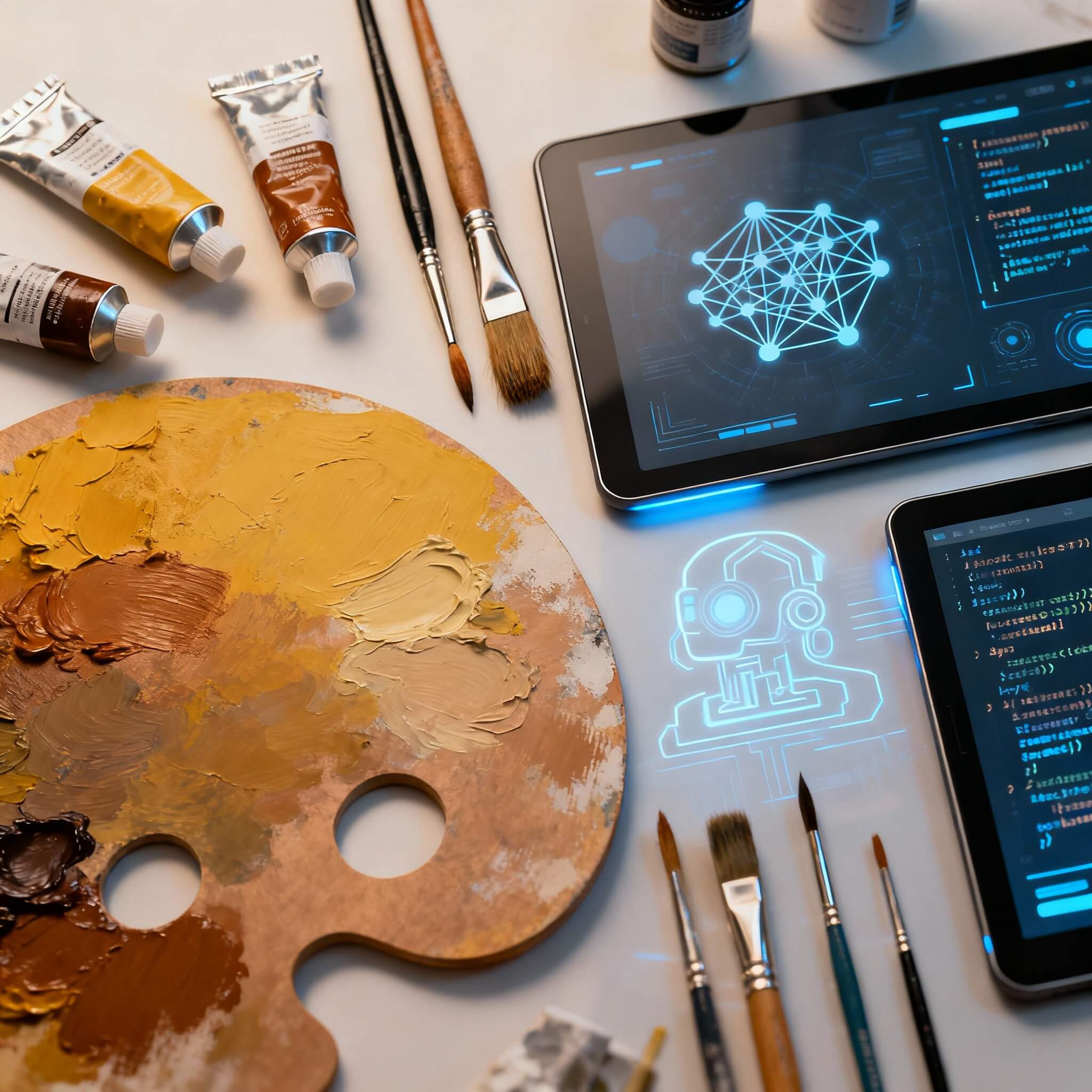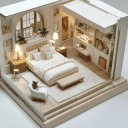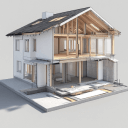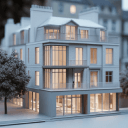Imagine standing in a freshly renovated room with blank white walls, a new walnut hardwood floor, and a navy blue sofa. You’re excited to decorate, but suddenly the dilemma of matching paint colors and materials hits you. Should the walls be a warm beige or a cool gray? Would a patterned rug clash with the floor?
In the past, you might have spent hours juggling paint swatches and fabric samples under different lights. Today, AI technology is changing this experience entirely. In fact, you can now stand inside a photorealistic model of your future space before buying a single can of paint, thanks to modern
AI interior design online tools
.
This article explores how AI-driven design tools like Arcadium 3D are revolutionizing the way we match paints, fabrics, and finishes in our homes.
The Challenge of Matching Colors and Materials
Achieving a cohesive look in a room is easier said than done. Colors can be deceptive, that perfect sage green paint that looked great on a tiny card might overwhelm an entire wall. Materials add another layer of complexity: the wood tone of your coffee table needs to complement your flooring; metal fixtures should match the color palette of the room.
Traditionally, interior designers rely on mood boards and trial-and-error, and homeowners often end up buying multiple sample paint cans or fabric swatches, hoping to find the right combo. This process is time-consuming, and mistakes are costly (repainting a wall or replacing mismatched curtains isn’t cheap!). The challenge is visualizing how all elements paint, furniture, textiles, and flooring will work together in one space before committing to them.
This is where AI comes to the rescue. Modern AI interior design assistants can analyze colors and textures and predict how they will look together. For example, AI-powered visualization tools can suggest harmonious color palettes and even match materials with your home’s interior style, giving you a realistic preview of your design before you commit.
Instead of relying solely on imagination or tiny samples, you can let the AI simulate different combinations in a lifelike manner. The result? You spot clashing combinations before they happen and gain confidence that your chosen paint and materials truly complement each other.
AI: Your New Interior Design Assistant
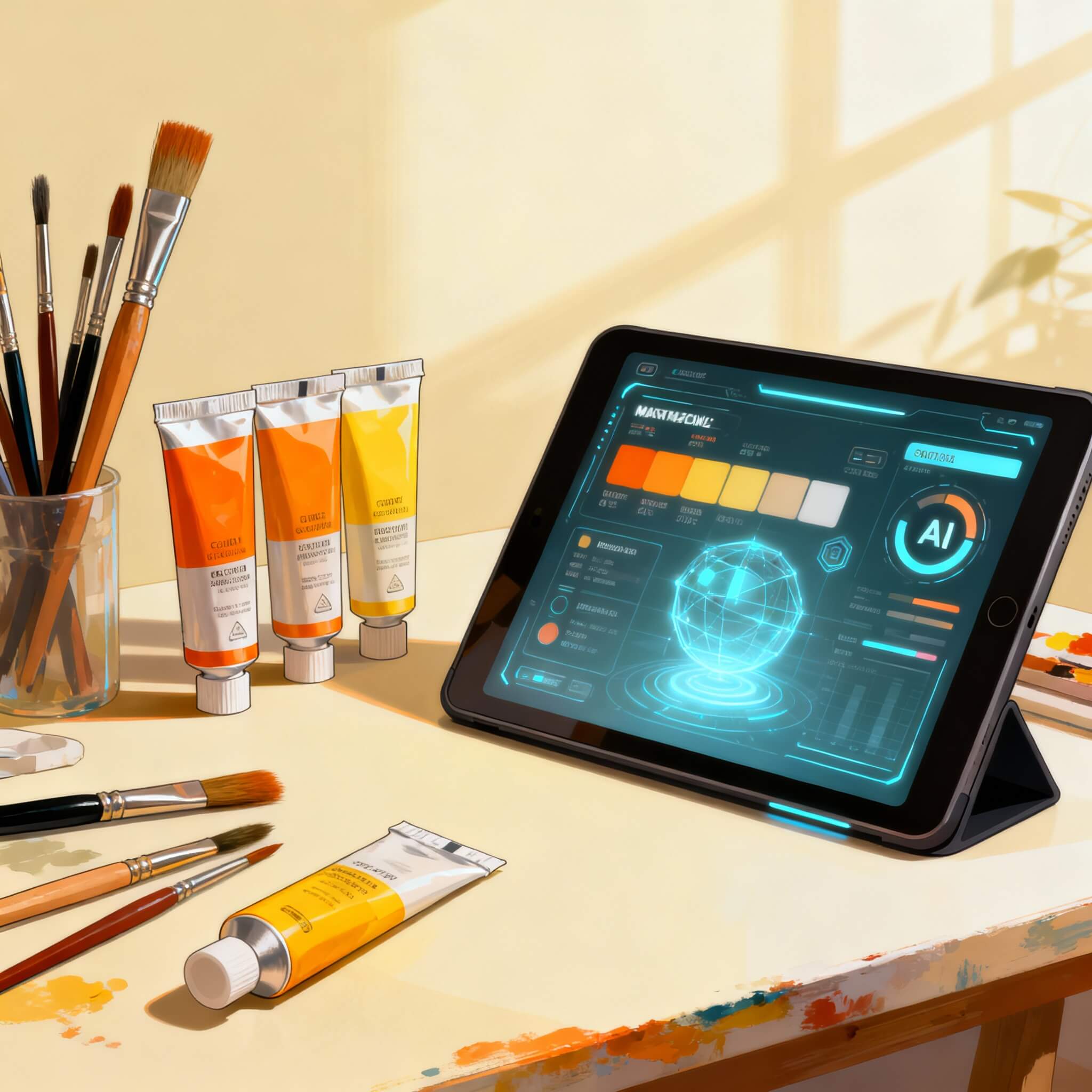
Artificial intelligence has quickly become the savvy decorator’s best friend. Think of AI as an interior design assistant that never gets tired and has an infinite library of style knowledge. Feed it some information, say, the style you’re aiming for or a piece of furniture you love, and it can generate recommendations and realistic visuals in seconds.
Want to see how a dusty blue paint would look with mid-century modern walnut furniture and brass light fixtures? An AI design tool can instantly render that scene for you. Want to experiment with swapping out a marble countertop for a butcher block in your kitchen? AI can show you the difference without you lifting a single piece of wood.
One example of this technology is Arcadium 3D, a cutting-edge platform that combines a 3D modeling environment with AI-driven design capabilities. Arcadium 3D is an AI-powered 3D house design tool that lets users create room layouts, visualize interiors in different styles, and share designs online.
Crucially for the everyday user, it’s browser-based and free to use, meaning there’s no software to install or paywalls blocking key features. Arcadium 3D essentially puts professional interior design and rendering tools into the hands of anyone with an internet connection.
With such a tool, you don’t have to be an architect or a pro designer to tackle the paint-and-material matching dilemma the AI does the heavy lifting in visualization, while you bring your creativity and preferences.
Designing Your Space with Arcadium 3D
Let’s walk through how a design enthusiast (like you or me) can transform a space using Arcadium 3D. The process is intuitive from the start. You begin by sketching the room’s layout in 3D drawing walls and adding windows or doors is a quick drag-and-click process. Arcadium’s focus on ease-of-use has earned it a reputation as one of the fastest and easiest 3D modeling tools available.
In fact, it delivers professional-level power without the steep learning curve of traditional design software. Because Arcadium lives completely in your web browser, there are no bulky downloads or installs to worry about. You can start a new project on a laptop, and even a modest computer can handle it since the heavy rendering work is managed in the cloud.
Furnish and customize:
Once the room’s basic shape is in place, it’s time to add furniture and materials. Arcadium 3D comes with a large inbuilt furniture library, offering thousands of pieces from sofas and beds to lamps and potted plants, all pre-modeled in 3D.
This means you can drop in a couch that closely resembles your real one or try out a completely new piece to see how it fits. The furniture and object library is extensive and fully integrated, allowing you to drag and drop scaled furniture, lighting, and other decor from a built-in catalog.
You’ll also find dynamic components: doors, windows, cabinets and more that you can stretch or resize, and they automatically adjust (imagine being able to extend a dining table and the chairs reposition themselves!). These smart features save hours of manual tweaking, letting you focus on the fun part of the design.
Now for the creative magic:
Applying colors and materials, Arcadium’s editor lets you change surface finishes on your 3D model. You can paint the walls with any color value, change floor materials, or swap upholstery on the furniture models.
For instance, color the walls in a soft gray, then with a few clicks switch them to navy blue or crisp white, it’s instant and undoable. You can try out a bold patterned wallpaper on one accent wall and hardwood versus tiled flooring to see which combination sings.
As a 3D AI interior designer using Arcadium, I often advise clients to experiment liberally at this stage. Because it’s all virtual, there’s no risk, you’re basically trying before buying. By the time we’re done, we already know exactly which paint code to get and what finish of wood or fabric will tie the room together.
Overlay multiple styles using AI:
Here’s where Arcadium 3D truly shines and sets itself apart with its integration of an AI interior design tool free for users to generate high-quality visuals. With a click, you can take a snapshot of your 3D room and let Arcadium’s AI image generation reimagine that scene in various styles or color schemes.
For example, you’ve placed basic furniture and chosen tentative colors in your model. Arcadium can then produce a photorealistic image of that room as if a professional designer had already polished it up. Even better, you can request the AI to show the room in different themes: maybe a Scandinavian style with light oak and white tones, or a Bohemian style with vibrant textiles and bold wall colors.
This AI will overlay these stylistic elements onto your room layout, giving you multiple distinct looks to compare. It’s like having a dozen decorated model rooms to peek at, all derived from the one design you created. This feature is incredibly useful for matching paints and materials because it might introduce combinations you hadn’t thought of.
Perhaps the AI shows an image with a teal accent wall that unexpectedly ties the whole space together. By generating several AI visualizations, you’re effectively overlaying multiple styles and color options on the same room design, quickly honing in on what feels right.
Arcadium’s AI visualization isn’t just a gimmick; it produces remarkably detailed results. You can see realistic textures of how the light falls on a brick wall versus a painted wall, or how a velvet sofa would contrast with a shaggy rug. These AI renderings allow you to see and feel the material interplay.
One moment, you’re looking at a sleek modern render with cool tones and chrome accents; the next, a cozy rustic render with warm wood and stone, all without changing your base model. By the time you finish this exploratory phase, you’ll have a clear winner, a palette of paint and materials that you love, backed by images you can trust.
Experience a virtual walk-through:
Matching paints and materials isn’t only about static images; it’s also about how a space feels when you’re in it. This is why Arcadium 3D enables immersive virtual walk-through experiences. At any point, you can switch into first-person view and “walk” around your model as if you’re inside the room.
This is a game-changer. Suddenly, you’re not looking at a floor plan or a still image, you’re standing in your future room. Strolling from one end to the other, you get a true sense of how the wall color envelops the space, whether the chosen materials make the room feel cozy or cold, and how light and shadows play on different surfaces.
Virtual walkthroughs offer a realistic sense of space and lighting, far better than trying to imagine from 2D plans. For example, you might discover during the virtual tour that the navy accent wall you loved in a snapshot feels a bit too dark in the long view of the hallway, so you decide to tone it down to a lighter blue-gray. It’s much better to realize that in the digital model than after painting the whole wall in real life!
Arcadium’s walk-through mode updates in real time too. If you move a furniture piece or swap a material, you see the change immediately as you navigate the room. This interactive feedback loop helps ensure every element works in harmony from every angle.
Instant sharing and collaboration:
Design is often a collaborative process. You might want a second opinion from a partner, friend, or even a client if you’re designing professionally. Arcadium 3D makes sharing your in-progress design incredibly simple. With a single click, you can generate a shareable link and send it to anyone.
There’s no need to export large files or have them install special software. Your collaborator can open the link in their web browser and instantly view the project, even taking their own virtual walk-through. This instant sharing via URL means feedback can be gathered quickly. For instance, a friend might virtually walk through the model of your living room and suggest, “Hey, what if that wall were green instead of blue?” you can make the change in minutes and send back a new link.
No messy file downloads, no confusion over versions, everything stays synced in the cloud. This ease of sharing not only saves time but also keeps the excitement of the design process going. You can share ideas and get inputs while you’re in the creative flow, rather than waiting weeks between in-person visits or presentations. And if you’re proud of your before-and-after AI visuals, you can share those images as well, to show how you arrived at the final concept.
Throughout this journey, what’s striking is how accessible and empowering the process becomes. Arcadium 3D is free to use and runs right in the browser, lowering the barrier to entry for sophisticated interior design. It’s also constantly evolving.
The developers have added loads of new features recently, like custom drawing tools (so you can sketch custom elements or details that aren’t in the library), print preview and floor plan view modes (so you can see your design in blueprint-style for planning or printing). These additions show a commitment to making the tool comprehensive for all design needs, from creative ideation to practical execution.
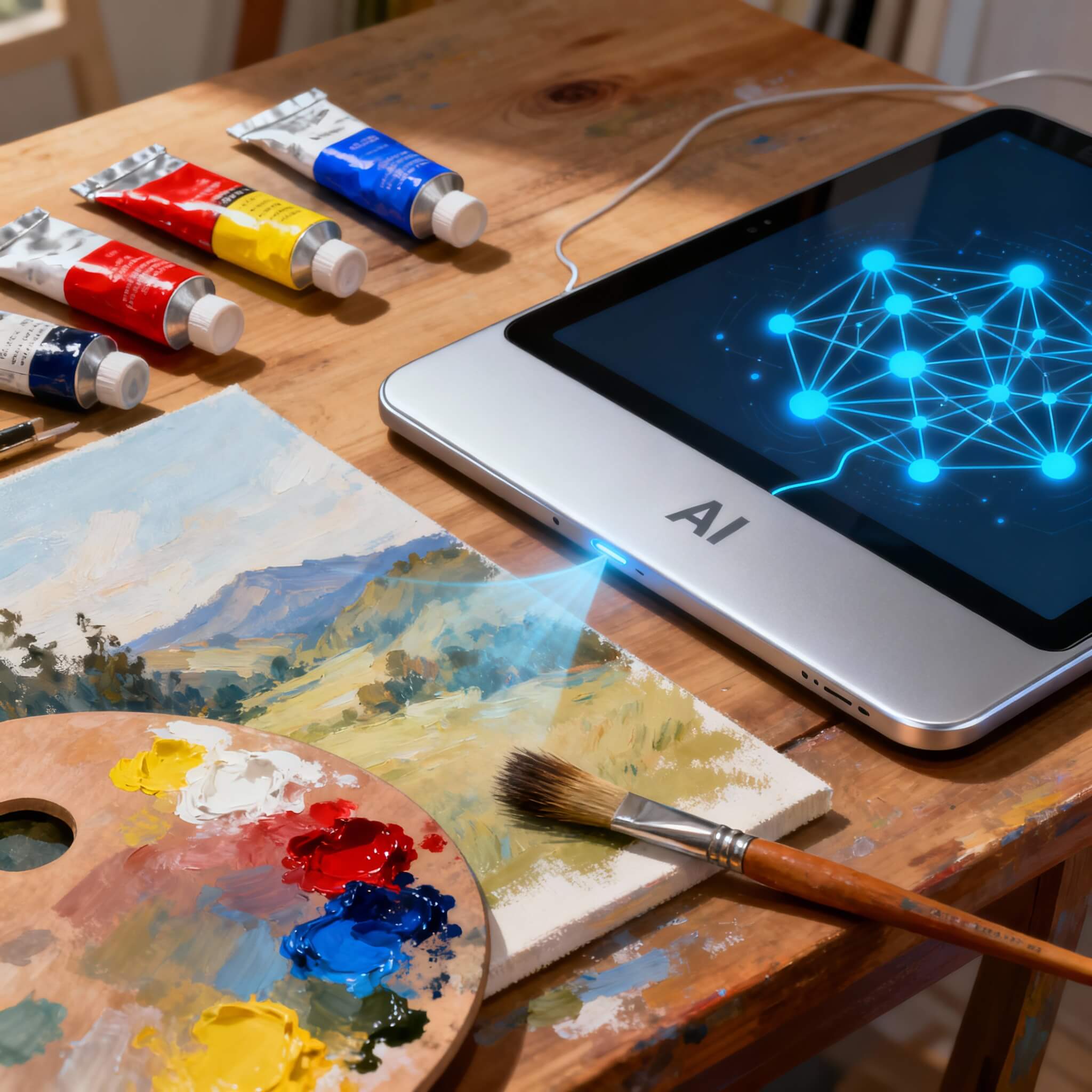
From Overwhelmed to Empowered: The AI Design Transformation
The story that unfolds with AI’s help is nothing short of transformative. What begins as an overwhelming task, matching the right paint with the right material,s turns into an enjoyable creative adventure. By leveraging a platform like Arcadium 3D, anyone can achieve a professional-looking design.
You don’t need formal training to get great results. The AI guides you with suggestions and realistic previews, essentially offering a safety net for your choices. This transforms novices into confident decorators and gives professionals superpowers to experiment more freely.
Consider a homeowner who has never designed anything beyond picking couch pillows: after spending an afternoon in Arcadium, she could redesign her entire living room in 3D, try five different wall colors, swap out dozens of furniture pieces, and land on a cohesive style she adores. All of this happens before she spends a single dollar on paint or new furniture.
By the time she’s ready to implement, she knows exactly what to buy (and what it will look like together), a huge money-saver and stress-reducer. The vision in her head is clearly translated into a plan, thanks to the AI visuals. This is the power of matching paints and materials with AI: it bridges the gap between imagination and reality.
Even for seasoned interior designers, AI opens new horizons. It can rapidly generate alternative ideas, some that the designer might not have initially considered, sparking fresh inspiration. And for clients, seeing is believing. When a designer presents AI-generated renderings of a proposed color scheme or material combo, clients are far more likely to feel comfortable and excited about the direction. Everyone speaks the same visual language, so to speak.
In the end, AI doesn’t replace human creativity or taste it augments it. You still decide that you love the contrast of navy walls with brass fixtures, or that you prefer a matte finish hardwood over glossy tile. But the AI ensures you make those decisions with full knowledge of how they will look and feel in your space. It’s a collaborative dance between your personal style and the AI’s capabilities. The result is a transformed space that matches your vision, achieved with less guesswork and more confidence.
As a 3D AI interior designer writing this, I can’t help but feel excited about how far we’ve come. Not long ago, sophisticated interior visualization was reserved for big-budget projects or professionals with high-end software. Now, anyone with a dream for their space and a tool like Arcadium 3D can make it happen. The next time you find yourself staring at a wall of paint chips in the hardware store, remember: there’s a smarter way. Fire up your laptop, let AI guide your creativity, and watch your space come to life in vivid color and detail before you ever open that paint can.
Frequently Asked Questions
How can AI help me choose the right paint colors and materials?
AI tools can generate realistic previews of colors and materials before you buy. You can upload a photo or create a 3D model, and the AI will suggest matching paint, flooring, and decor that fit your style.
Is there a free AI interior design tool online?
Yes. Arcadium 3D is a free, browser-based tool that lets you draw rooms, add furniture, and use AI to visualize styles and colors. It’s simple to use and includes sharing options and AI-generated renderings.
What is Arcadium 3D and how does it work?
Arcadium 3D is an AI-powered design platform that lets anyone create realistic 3D spaces. You can draw floor plans, furnish them, and use AI to style and render your design instantly—all within your browser.
Do I need design experience to use Arcadium 3D?
No. Arcadium 3D is beginner-friendly. You just click, drag, and drop to build rooms and add furniture. It’s intuitive and fun to use, even for those without any design or technical background.
Can I walk through my room in 3D?
Yes. Arcadium 3D includes a virtual walk-through mode that lets you explore your space as if you were inside it. You can check proportions, lighting, and flow before making any real-world changes.


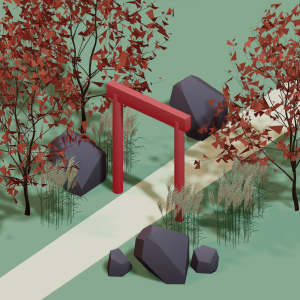 All training, tips and articles
All training, tips and articles
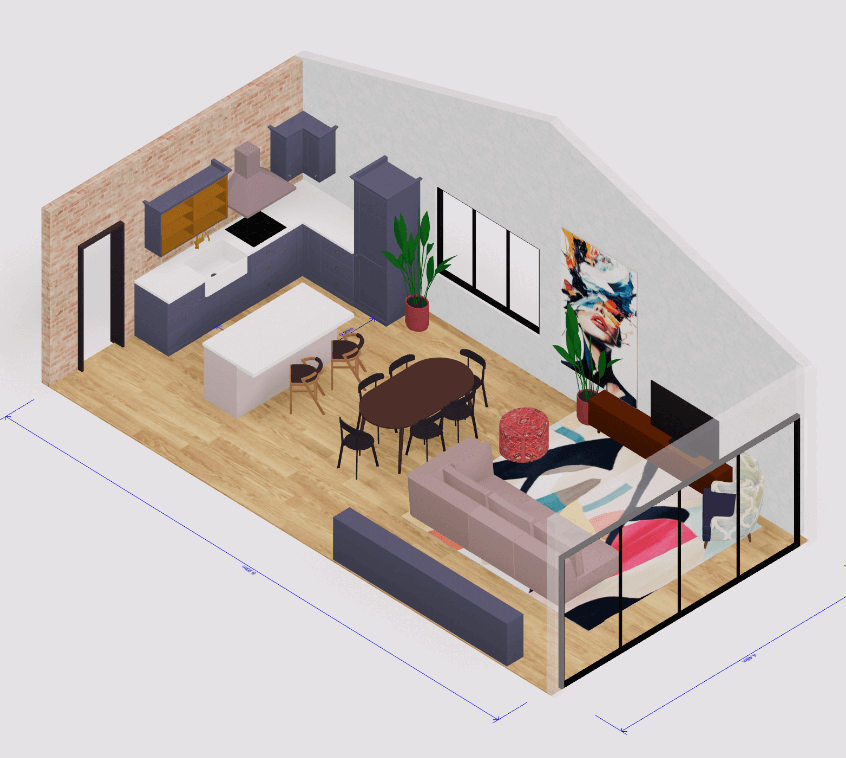 3D house design tool
3D house design tool
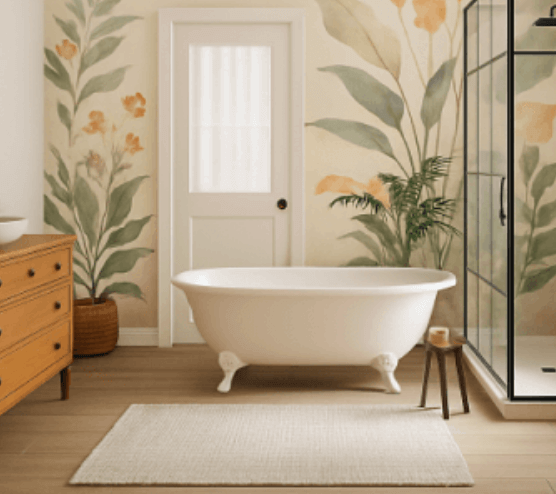
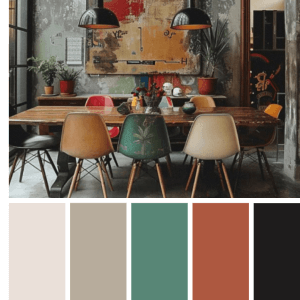 Color palette generator
Color palette generator
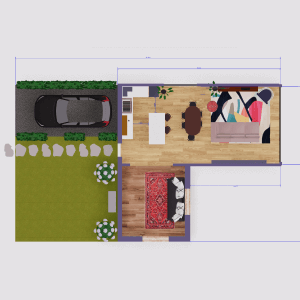 Floor plan creator
Floor plan creator
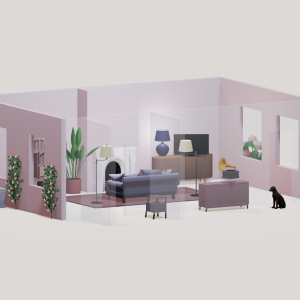 Interior design app
Interior design app
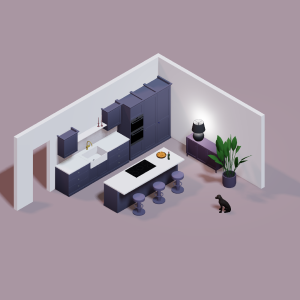 Kitchen design tool
Kitchen design tool
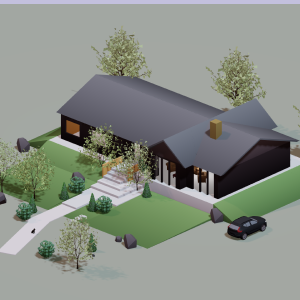 House design software
House design software
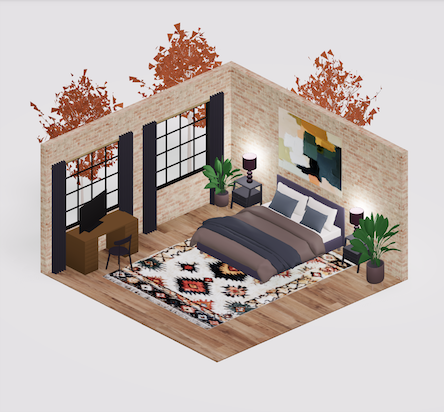 Room designer
Room designer
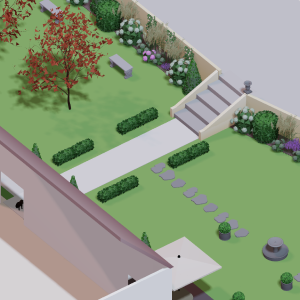 Landscape design software
Landscape design software
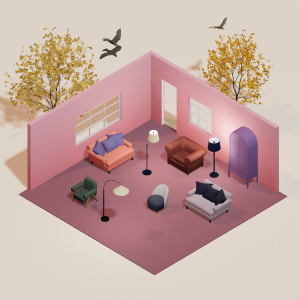 Bedroom design
Bedroom design
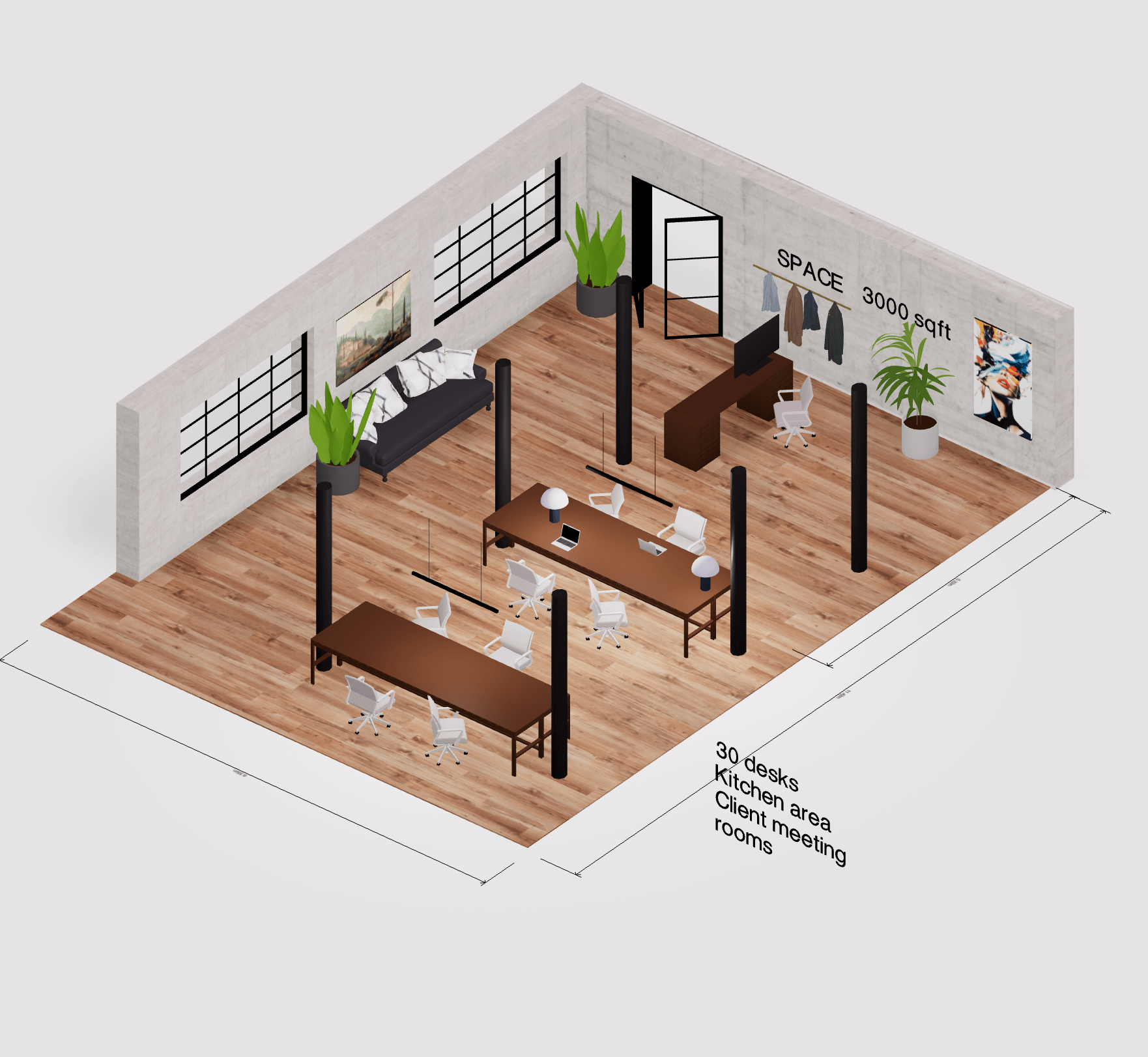 Office floor plan creator
Office floor plan creator
